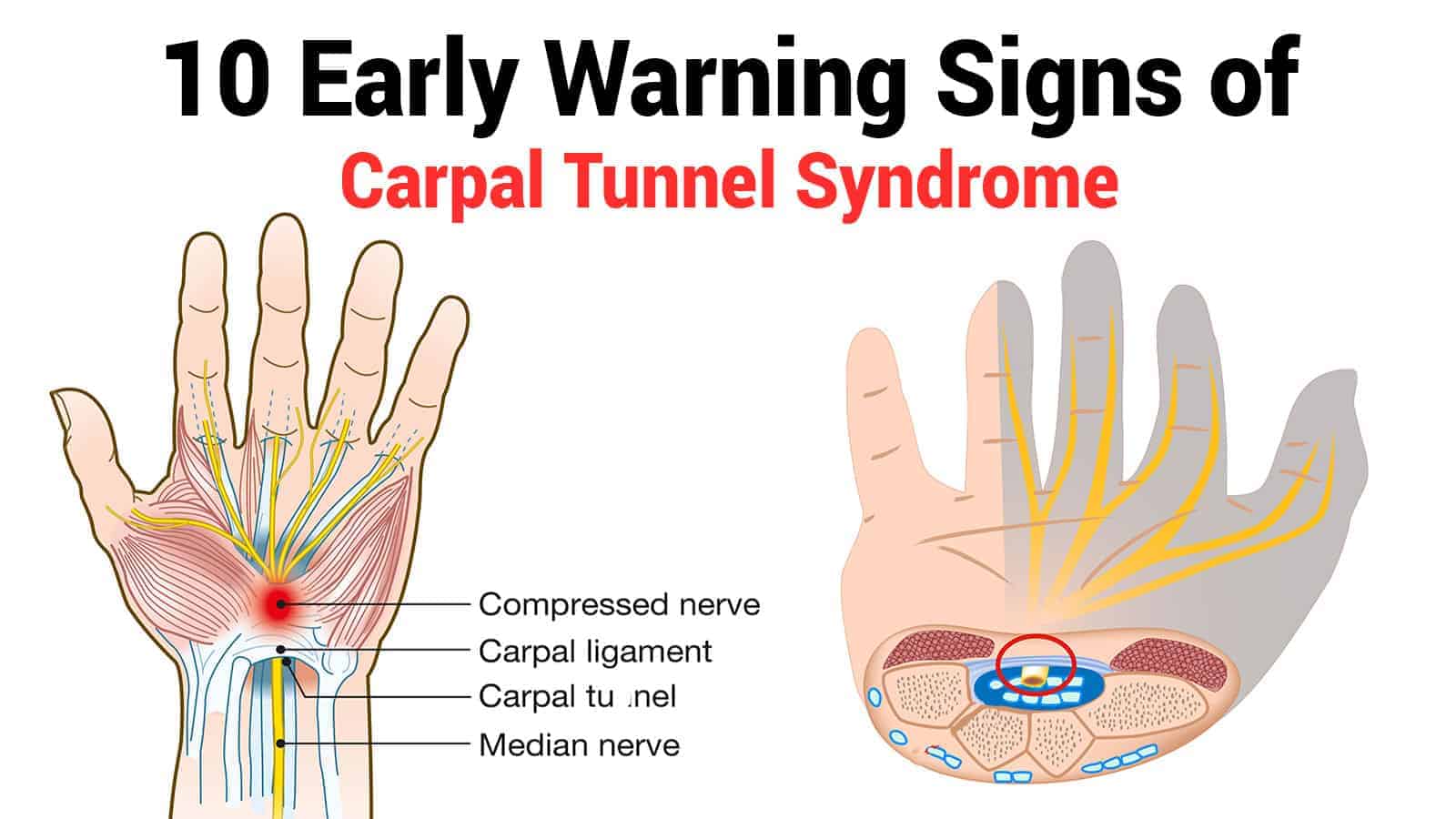If you’re struggling with carpal tunnel syndrome, you can take solace in knowing you are not alone. According to the American College of Rheumatology, over 4 million Americans are struggling with the same condition. That said, there are two different types of carpal tunnel syndrome, bilateral and unilateral. The good news, however, is that both of these conditions are treatable.
For those unfamiliar with carpal tunnel syndrome, the condition triggers a numbing or tingling sensation in the thumb, index finger, middle finger, and ring finger. In most cases, carpal tunnel syndrome, also known as CTS, is a byproduct of a repetitive strain injury. For reference, these injuries result from cumulative damage to muscles, tendons, and nerves in the wrists and hands.
WHAT YOU SHOULD KNOW ABOUT REPETITIVE STRAIN INJURIES
To better understand CTS, it helps to know a little more about repetitive strain injuries (RSI) as the two conditions often go hand in hand. Because repetitive strain injuries are the result of moving the same muscles, tendons, and nerves over and over again, individuals with certain occupations are more likely to develop them.
That said, between 2007 and 2014, the occupations with the highest rate of CTS-related worker’s compensation claims that stem from RSI were in production, material moving, and administrative support, according to a study published by safety.blr.com. Separate studies showed that CTS-related worker’s compensation claims were almost just as high for the following occupations:
- Professional athletes
- Cashiers
- Seamstress
- Construction workers
RSI can also be brought on by certain hobbies, such as drawing or crocheting, for example. Either way, most individuals will start to notice signs of RSI long before the condition gives way to CTS. Some of the most common tell-tale signs of an RSI include tenderness, swelling, and weakness that affect the hands or wrists. However, it is not uncommon to experience these symptoms in the forearms and elbows as well. RSI will eventually give way to CTS if the median nerve, which extends from the hand to the wrist, becomes compressed. This situation can happen if an individual does not seek treatment for their RSI or if the RSI is severe.
10 EARLY SIGNS OF CARPAL TUNNEL SYNDROME
Now that we have a cursory knowledge of what causes CTS, let’s take a moment to familiarize ourselves with some of the first signs of the condition. Similar to RSI, those who develop CTS will often experience the following:
1 – Burning or tingling sensations
These symptoms are typically felt during the day and can affect the forearm as well as the wrists and hands.
2 – Hand numbness at night
Most people with CTS report experiencing a loss of feeling in their hands upon waking up in the morning. In most cases, this is the result of sleeping with one or both of their wrist in a bent position, which can place even more strain on an already compressed median nerve.
3 – Shock-like sensations
Along with burning, tingling, and hand numbness, CTS can also trigger intermittent shock-like feelings that affect the thumb and fingers. As the condition worsens, this particular symptom will start to present itself more frequently and may become more intense.
4 – A decline in pinch strength
Those with CTS will usually experience a loss in pinch strength, which makes even basic tasks, such as buttoning a shirt or gripping small objects, for example, exceedingly difficult.
5 – Pain
Those who are struggling with CTS often report feeling pain in their thumb, index, or their middle fingers. The same pain can also sometimes affect their entire hand.
6 – Itchy palms
While the exact reason for why this occurs is unclear, many individuals with CTS will develop itchy palms. Most scientists and researchers believe that this symptom is the result of the median nerve being pinched or compressed.
7 – Changes in hand temperature
Another common symptom associated with CTS is a change in hand temperature. Studies show that when the median nerve becomes either pinched or compressed, an individual’s hands will be colder or warmer compared to other parts of their body.
8 – Changes in skin color
Similar to changes in hand temperature, a pinched or compressed median nerve can also alter skin color on the affected hand.
9 – Unable to make a fist
According to a study published by Medical News Today, individuals with CTS often have a hard time when it comes to being able to make a fist.
10 – Stiff fingers
When the median nerve in the wrist becomes irritated as a result of being pinched or compressed, it often results in stiff fingers.
ADDITIONAL FACTORS THAT CAN INCREASE THE RISK OF DEVELOPING CARPAL TUNNEL SYNDROME
In addition to RDIs, many other factors can increase one’s risk of developing CTS. Some factors include obesity and chronic health problems, such as thyroid disease, diabetes, and arthritis. Not surprisingly, wrist fractures also contribute to CTS.
WHEN SHOULD YOU CONSIDER BEING SEEN BY A PHYSICIAN?
If you’re experiencing any of the symptoms detailed in this article, it would be a good idea to be seen by a physician as soon as possible. After all, doing so will help you determine whether or not your condition is associated with an underlying health problem. In either case, your physician will be able to outline a course of treatment that addresses your illness or one that resolves your CTS symptoms. Beyond that, he or she will likely also take x-rays to confirm your symptoms are not related to a wrist fracture. Along with taking x-rays to rule out wrist fractures, most physicians will perform the following to confirm a patient has CTS:
Physical exam
During these exams, the physician will try to identify muscle weakness in the hand where CTS is suspected. There are two different approaches when it comes to this particular type of exam, including
Tinel’s sign
Named after French neurologist Jules Tinel, the Tinel sign test helps physicians determine if the median nerve is pinched or compressed at the wrist. In short, these tests entail tapping over the nerve to trigger a tingling or a “pins and needles.” If the patient experiences either of these two sensations, they more than likely have CTS, especially if your physician rules out underlying health problems and wrist fractures.
Phalen test
Also commonly referred to as a Wrist flexion test, the Phalen test involves the physician holding the patient’s wrist in a flexed position for a set time. And if the patient starts to experiences numbness or tingling in their median nerve, they more than likely have CTS.
 WHAT TREATMENTS ARE AVAILABLE TO THOSE WITH CTS?
WHAT TREATMENTS ARE AVAILABLE TO THOSE WITH CTS?
If you receive a diagnosis of CTS, several treatments can help ease stiffness, swelling, mobility issues, and many of the other symptoms commonly associated with the condition. Two of the most common physician-prescribed therapies used to treat CTS include cortisone injections and carpal tunnel release, a surgical procedure that is effective in relieving pressure on the median nerve. It is important to note that surgery is usually only recommended as a last resort as most patients tend to respond well to non-surgical treatments, which also includes the following home remedies:
Exercises
Doing CTS exercises is a great way to relieve many of the symptoms that you may be experiencing. With that, here are two that can start doing today:
- With your affected hand, make a fist and then slowly release it while pointing your fingers straight up. Ideally, you will want to complete five sets and ten repetitions for best results.
- Again, make a fist with your affected hand; however, this time, you will want to fan your fingers out as far as possible like you were opening an oriental fan. For the best results, you will want to complete five sets and ten repetitions.
Rest and ice
If your doctor diagnoses you with CTS, he or she will likely recommend rest. While it may not be possible for you to skip off the job to immobilize your wrist and hand, you can purchase a wrist wrap that helps the condition. You wear this device at work and while completing those repetitive tasks to help alleviate the swelling.
When you’re now wearing this device, you can apply ice to your affected area to help cool the burning sensation.
Over-the-counter pain relievers
A great way to combat stiffness, swelling, and pain associated with CTS is by taking over-the-counter pain relievers. Your doctor might recommend ibuprofen or acetaminophen. However, seek the correct diagnosis before starting this treatment.
WHAT HAPPENS IF YOU DON’T SEEK TREATMENT FOR CTS?
Generally speaking, over-the-counter pain relievers, coupled with CTS exercises, can go a long way toward easing your symptoms and may even reverse the condition. The same applies to surgery and cortisone injections. However, if you don’t seek treatment, things can quickly go from bad to worse. According to an article published by the Mayo Clinic, CTS can result in weakness and a loss of coordination in your fingers and thumb if left untreated, both of which can become permanent.
 FINAL THOUGHTS ON IDENTIFYING CARPAL TUNNEL SYNDROME
FINAL THOUGHTS ON IDENTIFYING CARPAL TUNNEL SYNDROME
All in all, CTS can have a profound impact on your day-to-day life. That’s because it affects nearly everything that requires the use of your hands. Fortunately, the onset of CTS is very gradual. Therefore, you have enough time to implement some of the at-home treatments detailed in this article and even schedule an appointment with a physician before it gets worse.












 Community
Community

